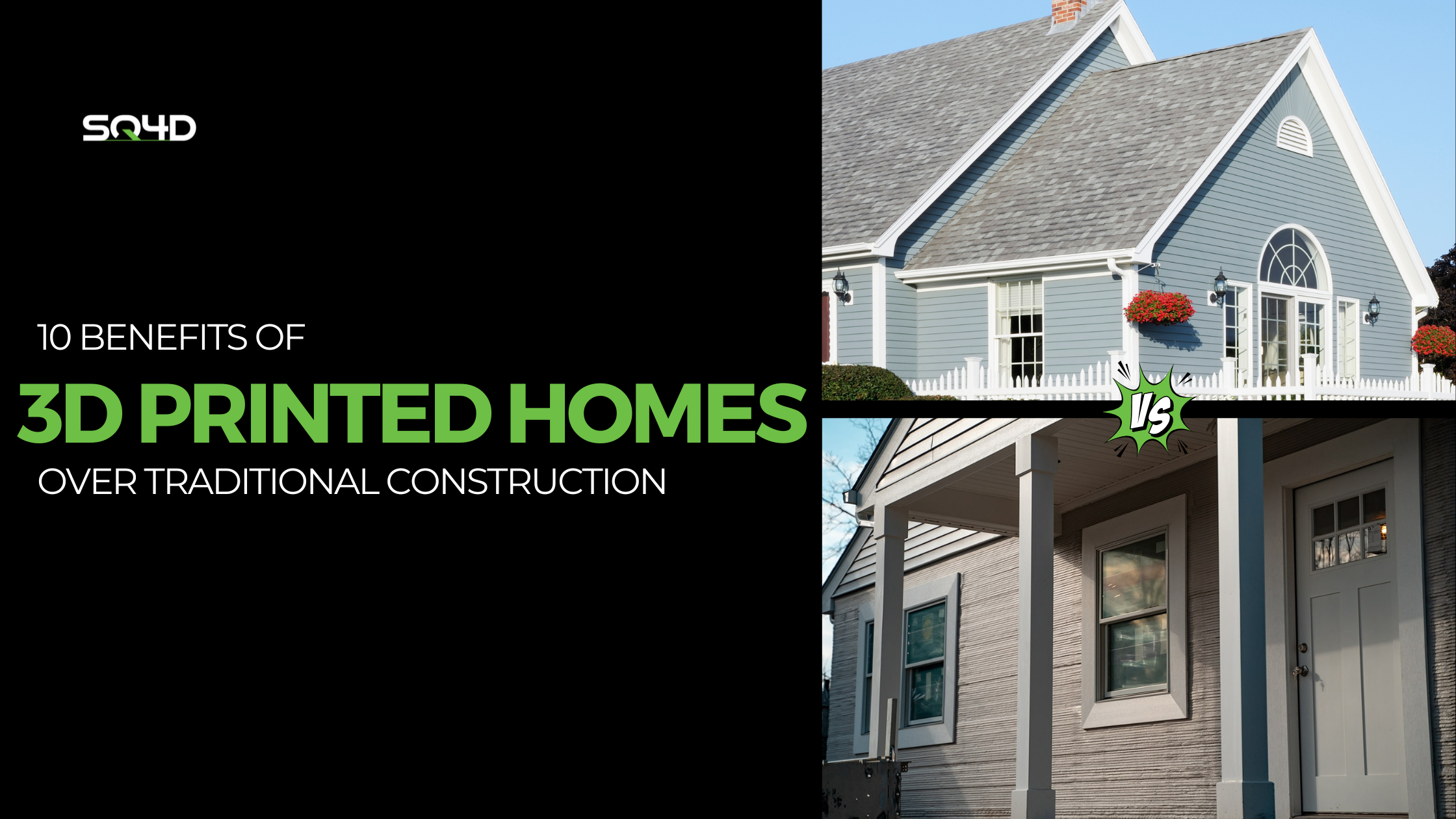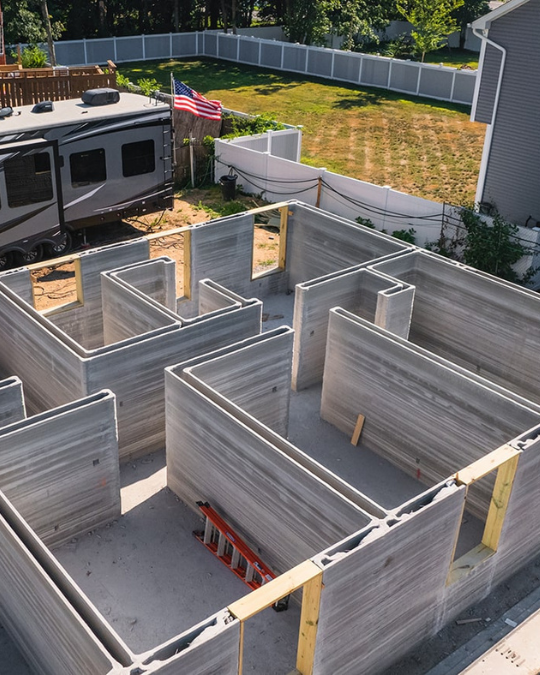
10 Benefits of 3D Printed Homes Over Traditional Construction
In recent years, the construction industry has witnessed a groundbreaking innovation: 3D printed homes. This advanced technology is revolutionizing the way we build, offering numerous advantages over traditional construction methods. At SQ4D we are industry leaders in 3D printing residential homes. If you’re considering a new home, here are ten compelling benefits of 3D printed real estate that make them a superior choice.
10 Benefits of 3D Printed Homes
1. Cost Efficiency:
Reduced Labor Costs: One of the most significant advantages of 3D printed homes is the reduction in labor costs. Traditional construction requires a large workforce, which can be expensive. In contrast, 3D printing automates much of the building process, needing fewer workers and thereby lowering labor expenses.
Material Savings: 3D printing technology uses materials with high precision, significantly reducing waste. This precision leads to substantial cost savings, as only the necessary amount of material is used.
2. Speed of Construction:
Faster Build Time: Traditional construction projects can take several months or even years to complete. 3D printed homes, however, can be erected in a matter of days or weeks. This rapid build time not only reduces labor costs but also allows homeowners to move in sooner.
3. Design Flexibility:
Complex Designs: 3D printing allows for the creation of intricate and customized architectural designs that are often difficult or impossible to achieve with traditional methods. This flexibility enables architects to push the boundaries of design, creating unique and innovative homes.
Customization: Homeowners can easily incorporate personalized features and modifications into their 3D homes. Whether it’s a unique layout or specific design elements, customization is much more accessible and affordable with 3D printing.
4. Sustainability:
Reduced Waste: The precision of 3D printing minimizes construction waste, making it a more sustainable option. Traditional construction methods often generate significant waste, which can be costly and harmful to the environment.
Eco-friendly Materials: Many 3D homes use sustainable or recycled materials. This eco-friendly approach reduces the environmental impact of construction and supports sustainable living practices.
5. Durability and Strength:

Enhanced Structural Integrity: The layering process used in 3D printing creates robust structures that can withstand environmental stresses better than traditionally built homes. The result is a more durable and long-lasting home.
Resilience: 3D printed homes can be designed to be more resistant to natural disasters such as earthquakes and hurricanes. This increased resilience provides homeowners with peace of mind and added protection.
6. Energy Efficiency:
Thermal Properties: 3D printed homes can be designed with superior insulation, improving their thermal properties. Better insulation means reduced energy consumption for heating and cooling, leading to lower utility bills and a smaller carbon footprint.
7. Accessibility:
Affordability: The lower costs associated with 3D printed homes make homeownership more accessible to a broader population. This affordability is especially beneficial in areas with housing shortages or for first-time homebuyers.
Rapid Deployment: The quick construction process of 3D printed homes is ideal for addressing housing shortages or providing emergency shelter in disaster-stricken areas. Rapid deployment can meet urgent housing needs more efficiently.
8. Labor Efficiency:
Skill Requirements: Traditional construction relies heavily on skilled labor, which can be in short supply. 3D printing reduces the dependence on skilled labor, mitigating the impact of labor shortages and ensuring consistent construction quality.
Automation: The automation involved in 3D printing reduces human error and increases construction accuracy. This precision leads to higher-quality homes with fewer defects and issues.
9. Reduced Environmental Impact:
Carbon Footprint: Lower energy consumption during construction and reduced waste contribute to a smaller carbon footprint. 3D printed homes are a more environmentally friendly option, promoting sustainable construction practices.
Minimal Site Disturbance: 3D printing causes less disruption to the construction site and surrounding environment. This minimal disturbance preserves the natural landscape and reduces the environmental impact of the building process.
10. Innovative Technology:
Advanced Materials: The use of advanced composites and new materials in 3D printed homes can enhance their performance. These materials often provide better durability, insulation, and resistance to environmental factors.
Smart Home Integration: 3D printed homes can easily incorporate smart technologies and systems within the design and construction phases. This integration allows for the creation of modern, high-tech homes that meet the needs of today’s homeowners.
Conclusion
The benefits of 3D printed homes over traditional construction are clear. From cost efficiency and rapid construction to sustainability and design flexibility, 3D printing is transforming the housing industry. As this technology continues to evolve, it’s likely that 3D printed homes will become an increasingly common and attractive option for homeowners around the world. Embrace the future of construction and consider a 3D printed home for your next move.
Whether you are a homebuyer, builder, investor or Media outlet visit our contact page to get in touch with us.